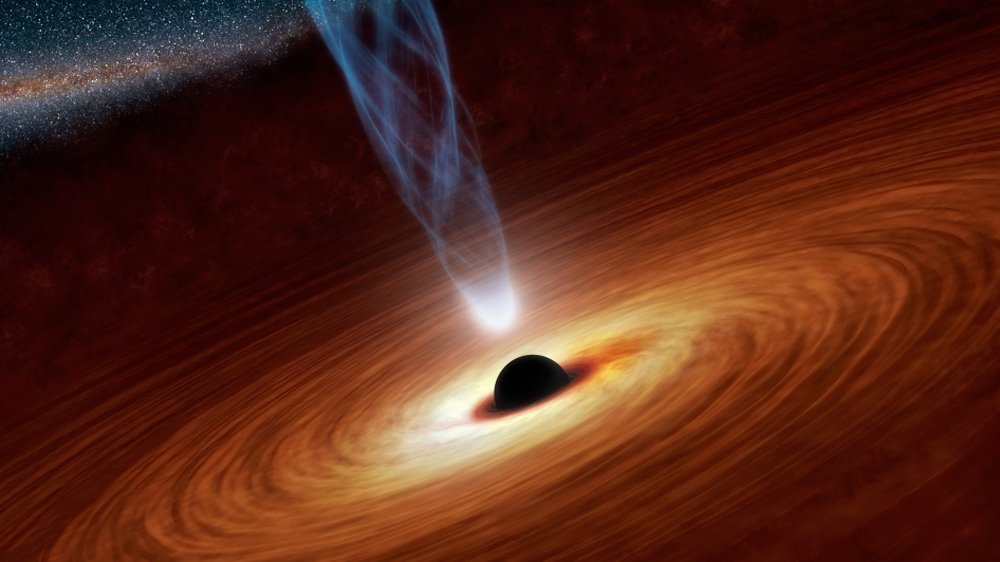Eavesdropping on Black Holes: Feasting Giants Sound Like Static

If you could hear the stuff that swirls around black holes, superdense white dwarfs and young stars, what would it sound like? Probably like the empty spaces on the radio dial, researchers say.
Simone Scaringi, a postdoctoral researcher at the Max Planck Institute in Germany, studies "accretion disks" around massive objects. An accretion disk is acollection of matter that gathers in a disc shape around a rotating object. Scaringi and his team looked at flickering in the light emissions of galactic nuclei, black holes, young stellar objects and white dwarfs, which are the collapsed remnants of massive stars. You can hear what accretion disks around black holes sound like here.
Using observations from NASA's Kepler space telescope, ground-based instruments and the European Space Agency's XMM-Newton satellite, the scientists found it's possible to turn the flickering into sound. [Images: Black Holes of the Universe]
"It's something I always wanted to try and do," Scaringi told Space.com. "This project gave me a good excuse to give it a try. For me, it's the obvious way to explain this research. … I can show it's a different type of noise."
The flickering comes from the energy released by material in accretion disks that falls in toward the central object. Scaringi treated the flashes' frequency as that of a sound wave; for example, a frequency of 10 flashes a second was converted to a wave consisting of 10 cycles per second, or 10 Hertz. There was one "cheat": Scaringi had to scale the frequencies to the range of human hearing, as most of them would be far too low for humans to hear.
The result is a white-noise-like sound, which helps illustrate the team's main finding: The physics of accretion disks scale up and down and remain mostly the same, no matter how massive the object at the center of the disk is.
To many people, this finding might be intuitive; after all, stirring creamer into a cup of coffee produces a shape not unlike that of a spiral galaxy. And scientists and philosophers have remarked on the similarity between the shapes of spiral galaxies and accretion discs around stars.
Breaking space news, the latest updates on rocket launches, skywatching events and more!
Intuitions, however, are often wrong. Many scientists were unsure whether the same physical laws applied at widely differing scales. One issue, Scaringi said, is relativity. Black holes, for example, have the mass of multiple suns — millions or billions of suns in the case of the supermassive black holes at the centers of galaxies. The difference in gravitational forces between the area near the black hole's "point of no return," called the event horizon, and the regions farther away is large, whereas for young stars it is comparatively small.
Scaringi's team has shown that the behavior of accretion disks will scale up; one can apply the same basic laws to a large black hole, or a galaxy, or a young solar system. But the mechanism is still unknown.
"As far as the detailed modeling is concerned, we're still not there," Scaringi said. "We seem to observe that it turns out that they all seem to scale, but the detailed physics as to why the scaling relation holds is not clear yet."
The study appears in the Oct. 9 issue of the journal Science Advances.
Follow us @Spacedotcom, Facebook or Google+. Originally published on Space.com.

Jesse Emspak is a freelance journalist who has contributed to several publications, including Space.com, Scientific American, New Scientist, Smithsonian.com and Undark. He focuses on physics and cool technologies but has been known to write about the odder stories of human health and science as it relates to culture. Jesse has a Master of Arts from the University of California, Berkeley School of Journalism, and a Bachelor of Arts from the University of Rochester. Jesse spent years covering finance and cut his teeth at local newspapers, working local politics and police beats. Jesse likes to stay active and holds a fourth degree black belt in Karate, which just means he now knows how much he has to learn and the importance of good teaching.

